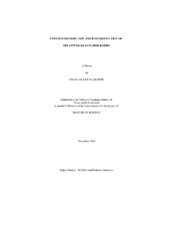| dc.description.abstract | Listed as federally-endangered in 1990, the Lower Keys marsh rabbit (LKMR, Sylvilagus palustris hefneri) exists as a metapopulation in patches of wetland habitat in Florida’s Lower Keys. This study sought to address 2 priority actions identified by the LKMR Recovery Team: (1) monitoring of populations and (2) reintroduction. Monitoring the distribution and status of LKMR populations is critical for targeting future management actions. Informal transects for rabbit fecal pellets were used to survey habitat patches documented in1988–1995 surveys and to identify additional patches of occupied and potential habitat. Next, a buffer was created around patches to help managers account for uncertainty in rabbit movements and to identify groups of patches that might function as local populations. Surveys included 228 patches of occupied and potential habitat, 102 of which were occupied by rabbits. Patches were arranged in 56 occupied and 88 potential populations. Surveys revealed new patches of both occupied and potential habitat. Considering only areas included in 1988–1995 surveys, however, revealed a net decrease in the number of occupied patches. Many of the recently extirpated populations, which tended to occupy the periphery of larger islands or small neighboring islands, were unlikely to be recolonized without human intervention. Reintroduction provides a means of artificially recolonizing potential habitat. Two pilot reintroductions were conducted to evaluate this conservation strategy for the species. The second reintroduction was postponed, but the first effort met all criteria for short-term success, including survival comparable to a control group, fidelity to release sites, and evidence of reproduction. There are a limited number of potential source populations for translocations. Future efforts should consider using in-situ captive breeding to prevent potential long-term impacts to these populations. Few potential release sites exhibited suitable habitat quality and landscape context. Thus, for reintroduction to be more widely-applied for this species, it must be part of a comprehensive management plan involving land acquisition, control of secondary impacts from development, and habitat restoration and enhancement. | en |


